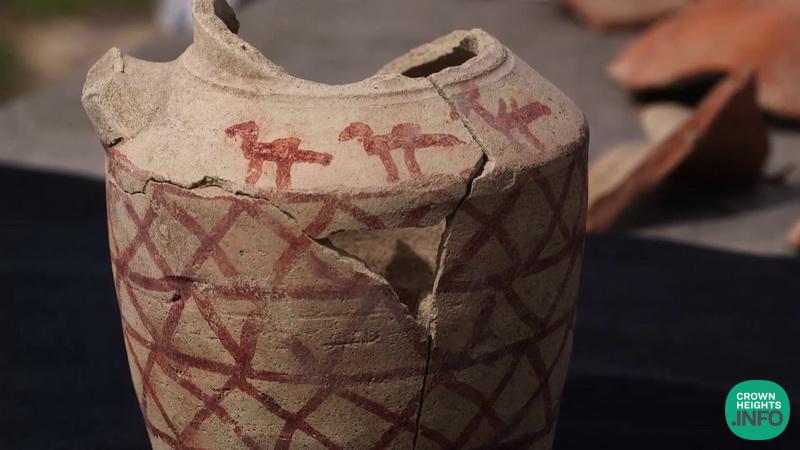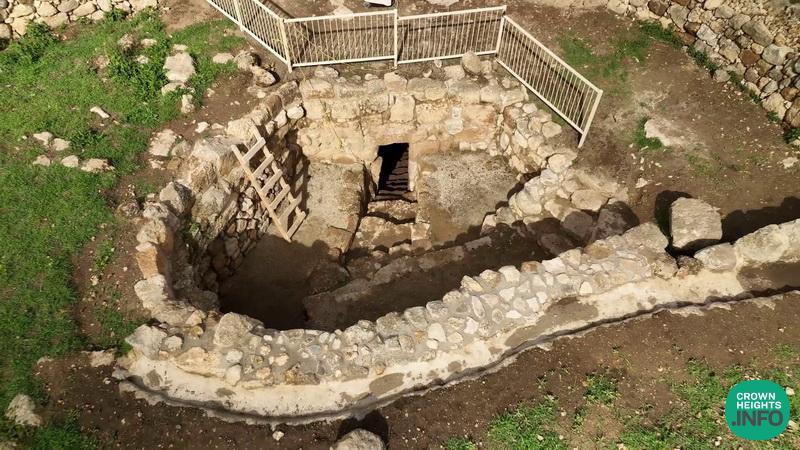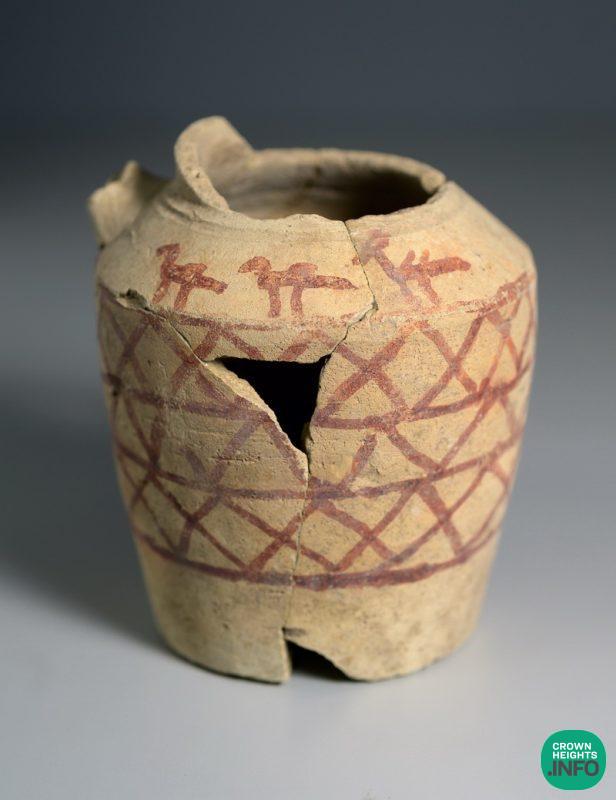
Ancient and Unique Clay Jug Featuring Camel Decorations Unearthed in Israeli Forest Excavations
The discovery, made while working to make the site more accessible to the public in an initiative by the Jewish National Fund-KKL, is being presented today (Thursday, March 27) at the 20th Annual Southern Research Conference of the Israel Antiquities Authority.
A rare and impressive red-painted clay jug, approximately 1,200 years old and used for the storage of liquids, featuring camel decorations, was uncovered in excavations led by the Israel Antiquities Authority at Horvat ‘Anim in Yatir Forest. “The fact that the artists chose to depict two camels on the jug underscores their significance during the Abbasid period—the 9th-10th centuries CE. Camels were a key means of land transport for moving goods and were therefore crucial to the economy,” explain the authors of the research paper: Oren Shmueli, Dr. Davida Eisenberg-Degen, and Dr. Anat Cohen-Weinberger of the Israel Antiquities Authority, along with Dr. Katia Cytryn from the Hebrew University of Jerusalem. The paper is being published today as part of the 20th Annual Southern Research Conference of the Israel Antiquities Authority, which is taking place at Ben-Gurion University in the Negev and is open to the public free of charge.
The decorated jug was discovered in a cave that had been converted into a dwelling during renewed archaeological excavations by the Israel Antiquities Authority. Originally, the cave served as an impressive underground olive press for oil production. The excavations were part of a project to develop the site for visitors, initiated by the Jewish National Fund. The olive press, along with an ancient synagogue from the Byzantine period previously discovered at the site, has undergone extensive conservation work by experts from the Conservation Department of the Israel Antiquities Authority.
The ancient synagogue, which underwent extensive restoration by the conservation experts of the Israel Antiquities Authority, was originally discovered 40 years ago in excavations conducted by the Israel Antiquities Authority and the Avshalom Institute. Among the finds were impressive mosaic floor remains, attesting to the site’s rich history and the importance attributed to it by the local community. “Around 1,500 years ago, the Yatir region was part of an area known as the ‘Daroma,’ where Jewish and Christian communities lived side by side,” explains Oren Shmueli of the Israel Antiquities Authority. “There is no doubt that the synagogue discovered in ‘Anim served as the religious center for the Jewish population living there.”
The olive press, built in a cave deep underground and approximately 1,300 years old (from the Early Islamic period), was fully excavated last year. The excavation revealed two massive stones that were part of the press mechanism. While it was in use, a wooden screw was installed between them, which was used to press olives and extract oil that was collected in a central stone basin within the press.
“The uniqueness of the olive press in Yatir Forest lies in its well-organized and advanced construction for its time. Essentially, it was an ancient factory equipped with a sophisticated and expensive machine for its era,” said Shmueli.
The special ceramic jug that was discovered was used for storing liquids. It was decorated with geometric patterns painted in red and featured illustrations of a caravan of animals, including a camel and possibly even an ostrich—the so-called “winged camel”—or a donkey. “In the Early Islamic period, camels served as the primary mode of transportation,” Shmueli explains. “The fact that camels appear in the jug’s illustrations highlights their significance at the time. Camels transported goods across the empire and were essential to the economy. In the Roman and Byzantine periods, goods were typically transported by sea via ships or by land using carts, but in the Islamic period, the camel took precedence as the dominant land transport—replacing the Roman ship with the ‘ship of the desert.'”
According to Heritage Minister Rabbi Amichai Eliyahu, “The Negev holds many layers of history, and each discovery sheds light on another aspect of our past. I welcome the collaboration between the Israel Antiquities Authority and The Jewish National Fund to preserve the Byzantine synagogue and prepare it for public visits, and I invite everyone to explore our heritage throughout the country.”
“We invite all those interested in history to attend today’s 20th Annual Conference on Southern Research and Archaeology, which is open to the public free of charge,” says Eli Escusido, Director of the Israel Antiquities Authority. “This is an excellent opportunity to deepen one’s knowledge of the southern region’s past and hear about the latest discoveries directly from leading researchers.”
Yifat Ovadia Luski, Chairperson of The Jewish National Fund – KKL: “The Jewish National Fund is proud to take part in the development and preservation of Horvat ‘Anim in Yatir Forest, which combines a rich Jewish history with remarkable archaeological finds from the distant past. The discovery of the magnificent ceramic jug, along with the exposure of the ancient olive press and the preservation of the Byzantine synagogue, strengthens our deep connection to the Negev and the region’s cultural heritage. We invite the public to visit, learn, and experience the fascinating story of Horvat ‘Anim and continue discovering our past as part of KKL’s vision for the development and preservation of heritage sites in Israel.”














